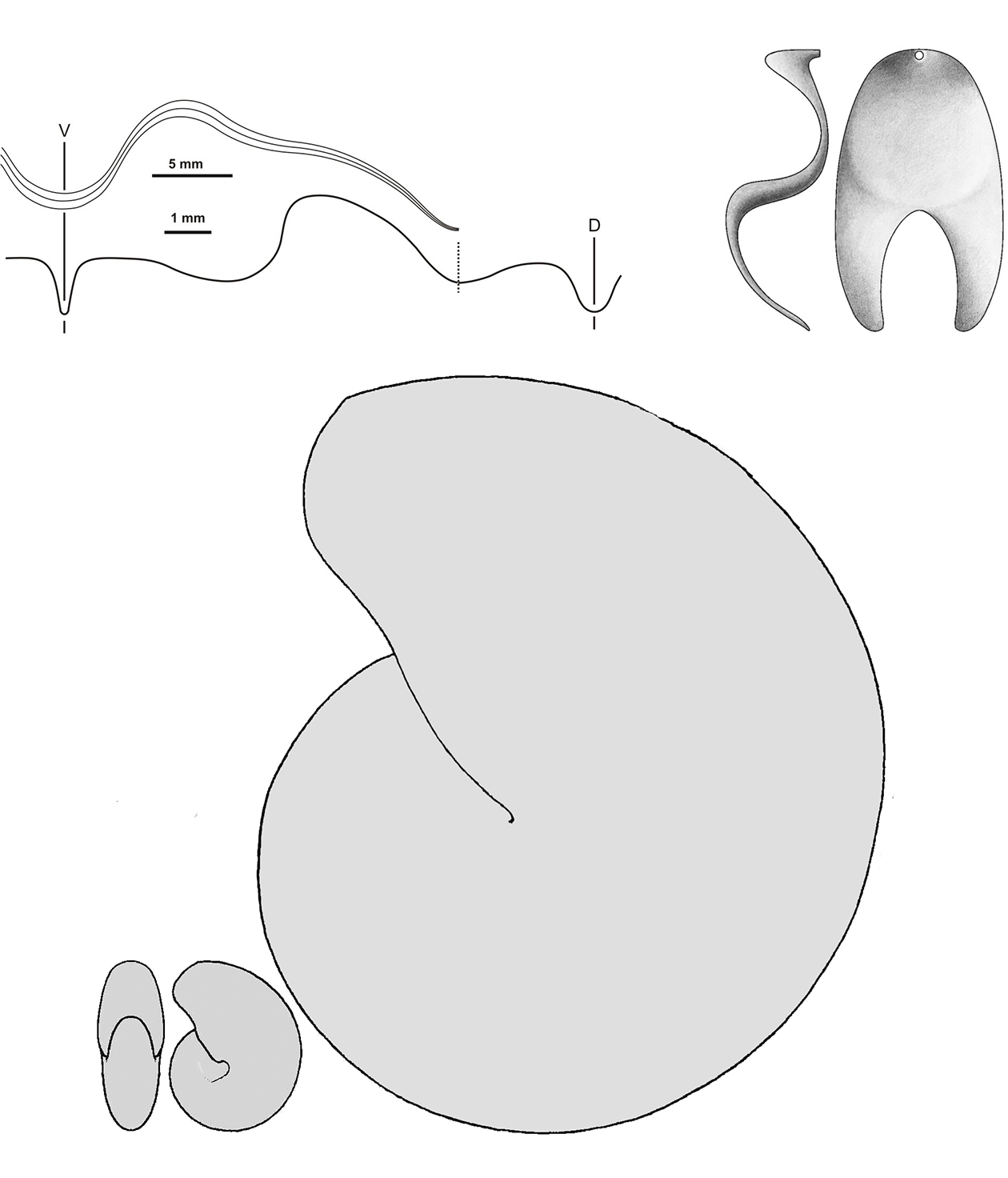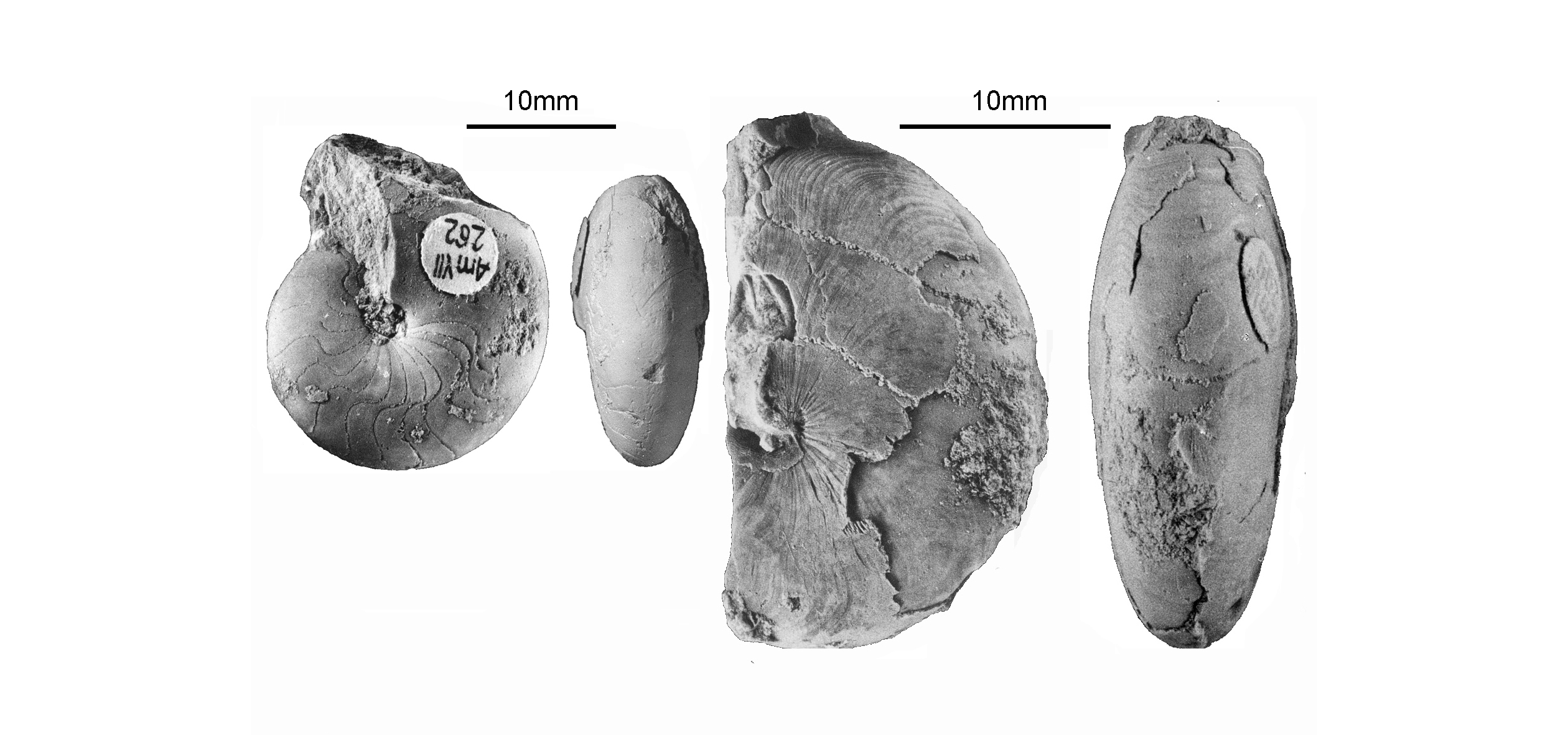Diagnoza
Smooth, involute, discoidal conch, deep gently concave flank lobe of the suture line.
Porównanie
This species is usually referred to as T. simplex the original drawing of the type of which shows a specimen with open umbilicus and is a nomen dubium . T. incrassatus (Gürich, 1896), based on a specimen from the early Famennian of Karczówka is probably available as a valid name. Although the depository of the original specimen remains unknown, pieces of the rock with ammonoid conchs are preserved in the collection of Dymitr Sobolew in Kharkov, Ukraine.
This mostly early Famennian species is close to the Frasnian Linguatornoceras linguum (Sandberger et Sandberger, 1851), the only tornoceratid preceding it stratigraphically in the Holy Cross Mountains. There are classified the early Frasnian tornoceratids from the Holy Cross Mountains in T. frechi (Wedekind, 1918) proposed to be the type species of the new genus Phoenixites. Unfortunately, similarly as in the case of T. typum, the type horizon of P. frechi is uncertain. Originally the species was based on an early or mid Frasnian material (Wedekind 1918) and Becker (1993a) proposed the neotype from Seßacker near Oberscheld, probably also of Frasnian age. This would require that these two closely similar tornoceratid lineages co-occurred in both the Frasnian and Famennian, crossing the boundary between these ages. The diagnostic feature of Phoenixites is the presence of ventrolateral furrows at the juvenile growth stages. Nothing like that has been recognized in the specimens available to me, their smallest diameter being 5 mm.
There is a significant variation in the conch geometry and suture line within particular samples. In some specimens the flank lobe is strongly concave (as typical for the species), in others shallow, almost approaching the status typical of the mid Famennian T. crebriseptum. Juvenile specimens may have rather flat or, instead, globose conchs. Serial ventral thickenings of the aperture, considered by Becker 1993b to define his Phoenixites sulcatus and P. varicatus (Wedekind, 1918), co-occur with those without thickenings (in Jabłonna beds 7 and 24).
The tornoceratids show an apparent bimodality in size frequency distribution interpreted as a case of sexual dimorphism. Already in the early Frasnian Domanik Formation of the Timan specimens of diameter about 35 mm with densely distributed terminal septa co-occur with conchs of at lest 90 mm diameter. In my material from Jabłonna, a still not mature specimen of 115 mm conch diameter co-occurs with mature specimens of 27 mm size. Makowski (1991) proposed to distinguish a separate chronosubspecies T. frechi parvum based on the allegedly small size of macroconchs but the illustrated specimens do not show convincing evidence of growth termination and may be actually juveniles.
In the laminated marls of the earliest Famennian at Kowala, numerous cephalopod jaws occur. Their elongated shape suggests that the conch aperture to which they were fit was rather compressed, with a rounded venter. This would fit the morphology of Tornoceras, the only lineage expected to occur in strata of this age. The most unexpected aspect of these jaws is that they show a medial suture; these were actually aptychi. Minute specimens, probably juvenile, show sometimes an iron mineralization suggestive of substantial original thickness of valves in their marginal parts. Large, probably mature specimen is split along the suture and the ventral tips of valves are rounded also admedially.
Autekologia
Występowanie geograficzne
Karczówka, Wietrznia, Kadzielnia, Jabłonna (beds 5-7), and Janczyce.
Zasięg czasowy
Probably the late K. triangularis Zone.
Materiały muzealne
ZPAL: 23 specimens.
Literatura
Dzik, J. 2006. The Famennian "Golden Age" of conodonts and ammonoids in the Polish part of the Variscan sea. Palaeontologia Polonica 63, 1-359.



